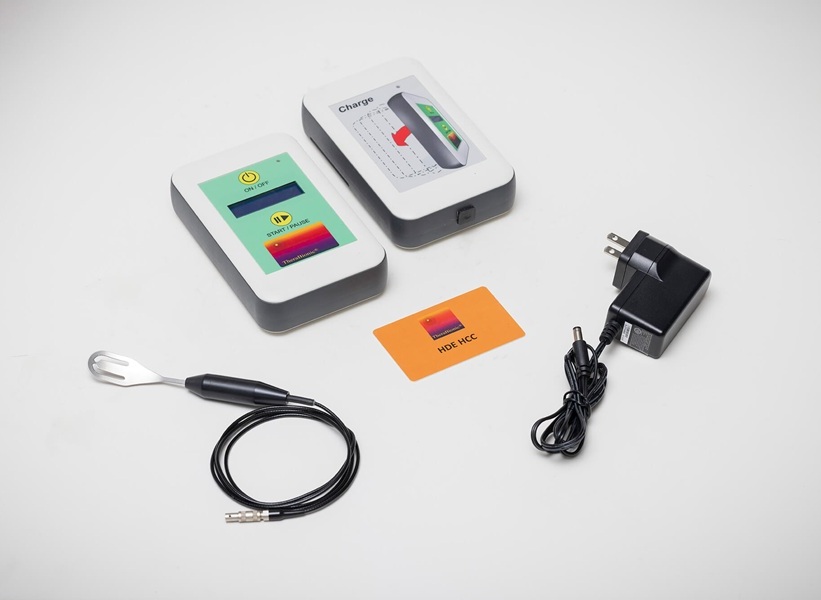Robotic Kidney Cancer Surgery Offers Smaller Incisions, Fewer Blood Transfusions and Complications
|
By HospiMedica International staff writers Posted on 01 Sep 2022 |

Kidney cancer is not always confined to the kidney. In advanced cases, this cancer invades the body’s biggest vein, the inferior vena cava (IVC), which carries blood out of the kidneys back to the heart. Via the IVC, cancer may infiltrate the liver and heart. Now, a new study has shown that robotic IVC thrombectomy (removal of cancer from the inferior vena cava) is not inferior to standard open IVC thrombectomy and is a highly safe and effective alternative approach. The affected kidney is removed along with the tumor during surgery.
The open surgery requires an incision that begins two inches below the ribcage and extends downward on both sides of the ribcage. Next, organs that surround the IVC, such as the liver, are mobilized, and the IVC is clamped above and below the cancer. In this way, surgeons gain control of the inferior vena cava for cancer resection. These large, technically challenging surgeries last eight to 10 hours and involve a multidisciplinary team of vascular surgeons, cardiac surgeons, transplant surgeons and urologic oncology surgeons.
The study was conducted by researchers from the Mays Cancer Center and Department of Urology at The University of Texas Health Science Center at San Antonio (San Antonio, TX, USA), which is one of the high-volume centers in the U.S. with surgical expertise in treating this serious problem. The study is a systematic review and meta-analysis of data from 28 studies that enrolled 1,375 patients at different medical centers. Of these patients, 439 had robotic IVC thrombectomy and 936 had open surgery.
The study found that 18% of robotic patients required transfusions compared to 64% of open patients. Additionally, 5% of robotic patients experienced complications such as bleeding compared to 36.7% of open thrombectomy patients. The results are encouraging and indicate further study of robotic IVC thrombectomy is warranted.
“This study is the largest meta-analysis analyzing the outcomes of robotic versus open IVC thrombectomy,” said Dharam Kaushik, MD, urologic oncology fellowship program director, who is the senior author of the study. “In more than 1,300 patients, we found that overall complications were lower with the robotic approach and the blood transfusion rate was lower with this approach.
“That tells us there is more room for us to grow and refine this robotic procedure and to offer it to patients who are optimal candidates for it,” added Kaushik. “Optimal candidacy for a robotic surgery should be based on a surgeon’s robotic expertise, the extent and burden of the tumor, and the patient’s comorbid conditions. The open surgical approach remains the gold standard for achieving excellent surgical control.”
Latest Critical Care News
- Origami Robots to Deliver Medicine Less Invasively and More Effectively
- Improved Cough-Detection Technology Aids Health Monitoring
- AI Identifies Children in ER Likely to Develop Sepsis Within 48 Hours
- New Radiofrequency Therapy Slows Glioblastoma Growth
- Battery-Free Wireless Multi-Sensing Platform Revolutionizes Pressure Injury Detection
- Multimodal AI to Revolutionize Cardiovascular Disease Diagnosis and Treatment
- AI System Reveals Hidden Diagnostic Patterns in Electronic Health Records
- Highly Sensitive On-Skin Sensing Monitor Detects Vitamin B6 and Glucose in Sweat
- Artificial Intelligence Revolutionizing Pediatric Anesthesia Management
- New Device Detects Tuberculosis DNA Directly in Exhaled Air
- New Menstrual Cup Could Detect Infections and Improve Diagnostics
- Engineered “Natural Killer” Cells Could Help Fight Cancer
- Faster Lymph Flow Predicts Better Response to Diuretics in Acute Heart Failure
- New Global Recommendations Aim to End Deaths from Postpartum Hemorrhage
- 'Flat-Line ECG' Indicates Poor Outcomes for Out-Of-Hospital Cardiac Arrest
- New Guidance to Improve Diagnosis and Management of Heart Failure During Pregnancy and Postpartum
Channels
Critical Care
view channel
Origami Robots to Deliver Medicine Less Invasively and More Effectively
Delivering medicine to ulcers or other internal sites often requires invasive procedures that can disrupt surrounding tissues and lengthen recovery times. Traditional magnetic actuators used in soft robotics... Read more
Improved Cough-Detection Technology Aids Health Monitoring
Coughing serves as an important biomarker for tracking a variety of conditions and can help monitor the progress of respiratory diseases or predict when someone’s asthma is being exacerbated.... Read morePatient Care
view channel
Revolutionary Automatic IV-Line Flushing Device to Enhance Infusion Care
More than 80% of in-hospital patients receive intravenous (IV) therapy. Every dose of IV medicine delivered in a small volume (<250 mL) infusion bag should be followed by subsequent flushing to ensure... Read more
VR Training Tool Combats Contamination of Portable Medical Equipment
Healthcare-associated infections (HAIs) impact one in every 31 patients, cause nearly 100,000 deaths each year, and cost USD 28.4 billion in direct medical expenses. Notably, up to 75% of these infections... Read more
Portable Biosensor Platform to Reduce Hospital-Acquired Infections
Approximately 4 million patients in the European Union acquire healthcare-associated infections (HAIs) or nosocomial infections each year, with around 37,000 deaths directly resulting from these infections,... Read moreFirst-Of-Its-Kind Portable Germicidal Light Technology Disinfects High-Touch Clinical Surfaces in Seconds
Reducing healthcare-acquired infections (HAIs) remains a pressing issue within global healthcare systems. In the United States alone, 1.7 million patients contract HAIs annually, leading to approximately... Read moreHealth IT
view channel
Printable Molecule-Selective Nanoparticles Enable Mass Production of Wearable Biosensors
The future of medicine is likely to focus on the personalization of healthcare—understanding exactly what an individual requires and delivering the appropriate combination of nutrients, metabolites, and... Read moreBusiness
view channel
Philips and Masimo Partner to Advance Patient Monitoring Measurement Technologies
Royal Philips (Amsterdam, Netherlands) and Masimo (Irvine, California, USA) have renewed their multi-year strategic collaboration, combining Philips’ expertise in patient monitoring with Masimo’s noninvasive... Read more
B. Braun Acquires Digital Microsurgery Company True Digital Surgery
The high-end microsurgery market in neurosurgery, spine, and ENT is undergoing a significant transformation. Traditional analog microscopes are giving way to digital exoscopes, which provide improved visualization,... Read more
CMEF 2025 to Promote Holistic and High-Quality Development of Medical and Health Industry
The 92nd China International Medical Equipment Fair (CMEF 2025) Autumn Exhibition is scheduled to be held from September 26 to 29 at the China Import and Export Fair Complex (Canton Fair Complex) in Guangzhou.... Read more














